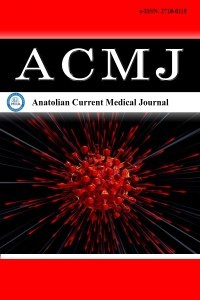1.
Shprecher, David, Jason Schwalb, and Roger Kurlan. “Normal pressure hydrocephalus: diagnosis and treatment.” <em>Curr Neurol Neurosci Rep</em>. 2008;8(5):371-376.
2.
Salomón H, Raymond D. “The special clinical problem of symptomatic hydrocephalus with normal cerebrospinal fluid pressure: observations on cerebrospinal fluid hydrodynamics.” <em>J Neurol Sci</em>. 1965;(24):307-327.
3.
Etsuro M. Guidelines for management of idiopathic normal pressure hydrocephalus. <em>Neurol Med Chir</em>. 2012;52(11):775-809.
4.
Nakajima M, Yamada S, Miyajima M et al. Tap test can predict cognitive improvement in patients with iNPH-results from the multicenter prospective studies SINPHONI-1 and-2. <em>Front Neurol.</em> 2021;12:769216.
5.
Li Min. Efficacy and safety of programmable shunt valves for hydrocephalus: a meta-analysis. <em>Int J Surg</em>. 2017;44:139-146.
6.
Zemack G, Romner B. Seven years of clinical experience with the programmable Codman Hakim valve: a retrospective study of 583 patients. <em>J Neurosurg</em>. 2000;92(6):941-948.
7.
Xu H, Wang ZX, Liu F. Programmable shunt valves for the treatment of hydrocephalus: a systematic review. <em>Eur J Paediatr Neurol.</em> 2013;17(5):454-461.
8.
Ortler M, Kostron H, Felber S. Transcutaneous pressure-adjustable valves and magnetic resonance imaging: an ex vivo examination of the Codman-Medos programmable valve and the Sophy adjustable pressure valve. <em>Neurosurgery</em>. 1997;40(5): 1050-1058.
9.
Capitanio JF, Venier A, Mazzeo LA, et al. Prospective study to evaluate rate and frequency of perturbations of implanted programmable hakim codman valve after 1.5-Tesla magnetic resonance imaging. <em>World Neurosurg.</em> 2016;88:297-299.
10.
Strahle J, Selzer BJ, Muraszko KM, et al. Programmable shunt valve affected by exposure to a tablet computer. <em>J Neurosurg Pediatr.</em> 2012;10(2):118-120.
11.
Zuzak TJ, Balmer B, Schmidig D, et al. Magnetic toys: forbidden for pediatric patients with certain programmable shunt valves? <em>Child’s Nervous System.</em> 2009;5(2):161-164. https://doi.org/10.1007/s00381-008-0770-x
12.
Duplessis E, Decq P, Barat JL, et al. Treatment of chronic hydrocephalus in adults by flow-regulated shunt. Apropos of a series of 46 patients. <em>Neurochirurgie</em>. 1991;37(1):40-43
13.
Weiner HL, Constantini S, Cohen H, et al. Current treatment of normal-pressure hydrocephalus: comparison of flow-regulated and differential-pressure shunt valves. <em>Neurosurgery.</em> 1995;37(5): 877-884.
14.
Wetzel C, Goertz L, Noé P, et al. Flow-regulated versus differential pressure valves for idiopathic normal pressure hydrocephalus: comparison of overdrainage rates and neurological outcome. Acta <em>Neurochir.</em> 2020;62(1):15-21.
15.
Wetzel C, Goertz L, Schulte AP, et al. Minimizing overdrainage with flow-regulated valves - Initial results of a prospective study on idiopathic normal pressure hydrocephalus. <em>Clin Neurol Neurosurg.</em> 2018;173:31-37.
16.
Bozhkov Y, Roessler K, Hore N, et al. Neurological outcome and frequency of overdrainage in normal pressure hydrocephalus directly correlates with implanted ventriculo-peritoneal shunt valve type. <em>Neurol Resul.</em> 2017;39(7):601-605.
17.
Ziebell M, Wetterslev J, Tisell M et, al. Flow-regulated versus differential pressure-regulated shunt valves for adult patients with normal pressure hydrocephalus. <em>Cochrane Database Syst Rev</em>. 2013;5:1-21.
18.
Katiyar V, Sharma R, Tandon V, et al. Comparison of programmable and non-programmable shunts for normal pressure hydrocephalus: a meta-analysis and trial sequential analysis. <em>Neurol India.</em> 2021;69:399-405.
19.
Jain H, Sgouros S, Walsh AR et al. The treatment of infantile hydrocephalus: ‘differential-pressure’ or ‘flow-control’ valves. A pilot study. <em>Childs Nerv Syst</em>. 2000;16(4):242-246.
20.
Lund-Johansen M, Svendsen F, Wester K. Shunt failures and complications in adults as related to shunt type, diagnosis, and the experience of the surgeon. <em>Neurosurgery. </em>1994;35(5):839-844.
21.
Feletti A, D’Avella D, Wikkelsø C et.al. Ventriculoperitoneal shunt complications in the european idiopathic normal pressure hydrocephalus multicenter study. <em>Oper Neurosurg</em>. 2019;17(1):97-101.
22.
Giordan E, Palandri G, Lanzino G, et al. Outcomes and complications of different surgical treatments for idiopathic normal pressure hydrocephalus: a systematic review and meta-analysis. <em>J Neurosurg. </em>2018;131(4):1024-1036. https://doi.org/ 10.3171/2018.5.JNS1875
23.
Nakajima M, Yamada S, Miyajima M, et al. Guidelines for management of idiopathic normal pressure hydrocephalus (third edition): endorsed by the japanese society of normal pressure hydrocephalus. <em>Neurol Med Chir</em>. 2021;61(2):63-97.
24.
Klinge P, Hellström P, Tans J, et al. One-year outcome in the european multicentre study on iNPH. <em>Acta Neurol Scand</em>. 2012;126(3):145-153.
25.
Larsson A, Jensen C, Bilting M, et al. Does the shunt opening pressure influence the effect of shunt surgery in normal pressure hydrocephalus? <em>Acta Neurochir (Wien)</em>. 1992;117(1-2):15-22. https://doi.org/10.1007/BF01400629
26.
Farahmand D, Sæhle T, Eide PK, et al. A double-blind randomized trial on the clinical effect of different shunt valve settings in idiopathic normal pressure hydrocephalus. <em>J Neurosurg</em>. 2016; 124(2):359-367.
27.
Nadel JL, Wilkinson DA, Linzey JR, et al. Thirty-day hospital readmission and surgical complication rates for shunting in normal pressure hydrocephalus: a large national database analysis. <em>Neurosurgery.</em> 2020;86(6):843-850.
28.
Schenker P, Stieglitz LH, Sick B, et al. Patients with a normal pressure hydrocephalus shunt have fewer complications than do patients with other shunts. <em>World Neurosurg.</em> 2018;110: 249-e257.
29.
Scholz R, Lemcke J, Meier U, et al. Efficacy and safety of programmable compared with fixed anti-siphon devices for treating idiopathic normal-pressure hydrocephalus (iNPH) in adults - SYGRAVA: study protocol for a randomized trial. <em>Trials.</em> 2018;19(1):566-576.

